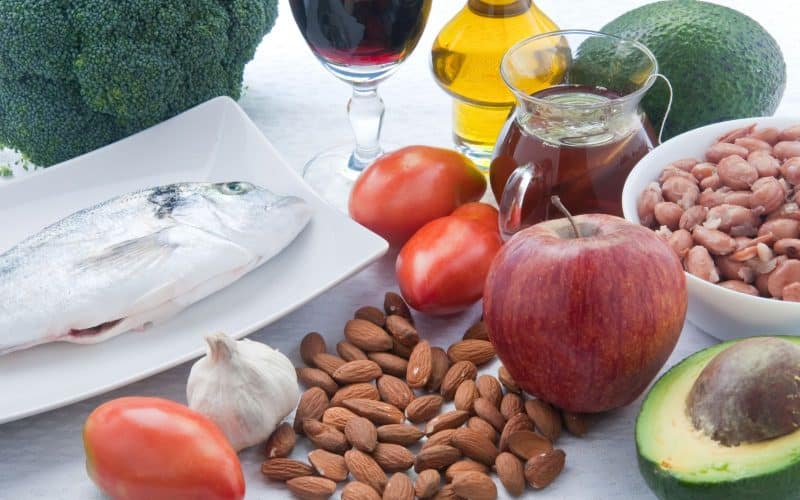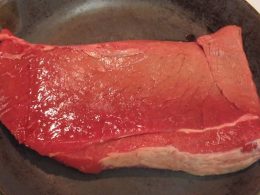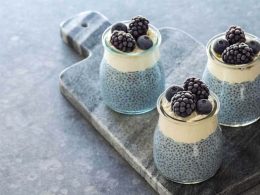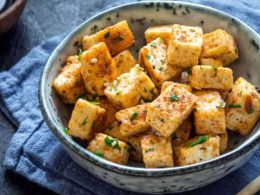Not many people pay attention to their cholesterol diet. Cholesterol is a vital building block for cell membranes. The liver naturally creates it.
It then goes throughout the body’s bloodstream using proteins. Cholesterol is essential for the production of vitamin D, hormones, and substances that help to digest fatty foods.
Nonetheless, a person’s genetics or lifestyle can trigger the production of too much cholesterol in the body. It can cause blockage of blood flow once it clogs up arteries.
It could also lead to heart attack, coronary heart disease, or even stroke. Which is why it is very critical to give your cholesterol diet a little more attention.
Adapting to a nutritious and well-balanced diet is a sure way to monitor and control cholesterol levels.
Cholesterol and fats
There are commonly two types of cholesterol, and they include;
- Low-density lipoproteins: This deposits a type of cholesterol around the body. It is often referred to as “bad cholesterol,” especially since it is very likely to build up.
- High-density lipoproteins: HDL gathers bad cholesterol from the arteries and returns it back to the liver to be disposed of. This cholesterol is referred to as “good cholesterol.”
While it may be beneficial for some people to shun foods high in cholesterol when adopting a cholesterol diet, National Heart, Lung, and Blood Institute (NHLBI), Centers for Disease Control and Prevention (CDC), and the American Heart Association (AHA) agree that focusing on foods that have “unsaturated fats” instead of foods that contains saturated or trans fats is the most efficient dietary way to minimize the risk of blood cholesterol.
Types of fat
The goal should be to focus on a diet that encourages low levels of “bad cholesterol” and high levels of “good cholesterol.” Attention must be paid to not only the quantity of fats present in your cholesterol diet but also the type of fats your body is exposed to.
Cholesterol level is influenced differently by each form of fats;
- Saturated fats: These are mostly present in dairy products and meat. Saturated fats notify the liver to produce more “bad cholesterols.”
- Trans fats: Trans fats are simply solidified vegetable oils. They are manufactured by the use of artificial processing known as hydrogenation. Baked goods, fried food, and packaged foods are often rich in trans fats.
- Unsaturated fats: These are richly present in fishes, nuts, plants, seeds, vegetable oil, and beans. Some unsaturated fats could be used to maximize the rate in which the liver breakdown and re-absorb bad cholesterols.
Trans fats
Trans fats do maximize not only levels of bad cholesterol but also minimize levels of good cholesterol. This is why they are categorized as “harmful” fats.
A study carried out on 344,696 participants in the space of 4–10 years after they changed the types of fats they consumed, showed that participants who minimized their intake of saturated fat by 5% and is recouped with polyunsaturated fats showed tremendously fewer incidents of coronary illness or coronary-related complications.
It is healthier to cut off trans fats out of your diet completely. The United States Food and Drug Administration (FDA), in 2013, announced that they no longer see major trans fats, which is partially hydrogenated oils gotten commercially, as safe.
This is because the oil has been strongly linked with coronary heart complications. The United States underwent a national ban on trans fats.
This ban was officiated in 2018, and many cities have already banned the use of trans fats in restaurants. This has helped to make cholesterol diet safe to practice.
During the time when nation-wide cardiovascular-related incidences reduced, the results of a study that appeared recently in JAMA Cardiology showed an additional 6.2% reduction of stroke and heart attack in the NY counties where there was a ban on trans fats.
Some foods to avoid
The American Heart Association (AHA) advise the minimal intake of saturated fat to no more than 6% of the overall daily calories.
They suggested limiting the following foods in your cholesterol diet to get this:
- Lamb
- Fatty beef
- Pork
- Lard and shortening
- Poultry with skin
- Saturated vegetable oils like palm oil, coconut oil, and palm kernel oil
- Dairy products obtained from reduced-fat or whole milk
It’s also important to avoid trans fats, and some of the foods to stay away from includes;
- Potato chips and crackers
- Buttered popcorn
- Bakery foods with shortening
- Foods fried commercially
- Packaged frostings
- Packaged cakes, cookies, pastries, and donuts
- Products that contain partially hydrogenated vegetable oils
Cholesterol in foods
Because the liver is required for the production of cholesterol, it can only be found in animal products.
Nevertheless, fat content should be more of a concern than cholesterol.
Swallowed cholesterol is poorly absorbed by the bloodstream, and there is little effect on the levels of cholesterol after many hours. Some of the cholesterols may be absorbed, but it might get to the arteries. Minimizing foods high in cholesterol might be helpful.
Foods that should be best avoided that are high in cholesterol include:
- Organ meats, like liver and kidney
- Red meat
- Bacon
- Sausage
Foods to include in your diet
It is critical to note that settling for an entirely fat-free diet in your cholesterol diet can also be unhealthy because it may impair general nerve and brain function, deplete the levels of healthy carbohydrates, and possibly maximize inflammation.
Adopting a diet rich in healthy fats can help minimize unhealthy cholesterol levels, at the same time maintaining and increasing proper cholesterol levels.
Fiber
A person would need the right amount of fiber to guarantee a healthy heart, and they are present in two primary forms;
- Insoluble (very essential for digestive health)
- Soluble
Cholesterols in the bloodstream is bonded with soluble fiber, which is then passed out through the stool. Soluble fiber also helps to control the levels of blood sugar.
Some cholesterol-friendly fiber options to consume include some of the following;
- Oily fish, such as trout, sardine, salmon, and albacore tuna
- Legumes, nuts, and seeds
- Skins of fruits
- Chia, flaxseeds, Lars, beans, psyllium, barley, oranges, Brussels sprouts, and blueberries
- Natural (non-tropical) vegetable oils, such as avocado oil, olive oil, safflower oil, and canola oil
It’s better to go for leaner cuts and smaller portions of meat. You can also consume low-fat or fat-free yogurt and milk. Medical experts don’t recommend non-fat cheese since it is highly processed and can’t be categorized as whole food.
Cooking tips and techniques
Your method of cooking can change the content of saturated fat in a meal. Some quick adjustments to cooking routines could include the following;
- Making has if a rack to drain fat when roasting, broiling or baking meats or poultry
- Skimming off top layers of congealed fats when the soup has been refrigerated
- The use of wine to baste your meat
- Grilling or broiling your meats instead of frying them
- Slicing off visible fat from meats and removing the skin from poultry before cooking
The combination of a plant-based balanced diet with cholesterol-cutting methods can help to reduce the risk of heart disease. Also, regular exercises with a healthy cholesterol diet can help to promote a healthier life.
Are you on a cholesterol diet? If yes, how have you benefited from it? What other diets are you on? Kindly share with us in the comments below.








